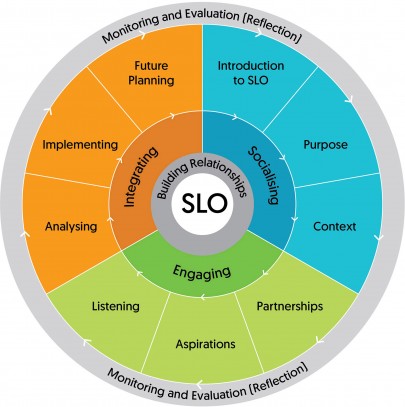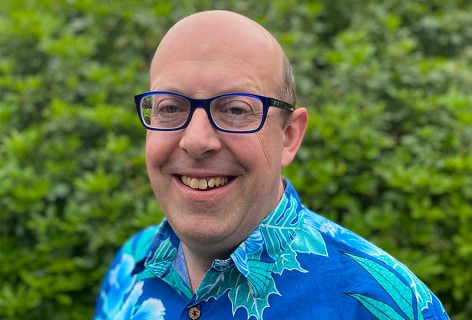
Social licence to operate (SLO) engagement model
SLO is much more than good PR and promises: it involves the cumulative building of credibility and trust over time with affected communities of interest. Social licence is not a single specific permission granted by communities to an organisation, but is better thought of as multiple licences achieved across various groups at different times. It is subject to change as opinions and perceptions change, and needs to be continually managed rather than obtained.
Three of Manaaki Whenua’s social researchers, Dr Dean Stronge, Robyn Kannemeyer, and Dr Peter Edwards, have developed a practical framework (Figure 1), informed by both Western and indigenous views of engagement, which is now being used to guide organisations that wish to gain and maintain a credible and effective social licence. There is no one-size-fits-all approach, so the framework is intended only as a guide and is adjusted depending on the needs and understanding of the organisation or the issue in question.
There are four key phases to building social licence:
- socialising the concept of SLO with the organisation
- hearing the views of stakeholders, and understanding that their expectations are essential in building and maintaining SLO
- integrating or co-developing the views and expectations of stakeholders into an organisation’s processes and procedures so that they foster SLO and promote participative and learning opportunities
- reflecting: working towards SLO is a dynamic and evolving process, so learning opportunities are important and need to be fed back into the process in a continuous reflecting step.
As an example of this framework in action, our researchers were asked to advise Predator Free (PF) Southland on a pathway that offered a greater potential to gain and maintain a social licence to eradicate possums and suppress mustelids in the Awarua region. The PF Awarua landscape extends from Sandy Point to Fortrose, covering approximately 69,000 hectares and including Bluff and Omaui, two communities with different experiences of previous predator control initiatives.
The recommendations that arose included engagement with the Awarua community early and often; transparency in sharing and communicating information; use of multiple communication channels; and thinking ahead about the legacy PF Southland and the community want to leave for future generations. Other vital factors in building successful SLO for PF Awarua include:
- the appointment of exceptional leaders and continuity of personnel
- an engagement plan that is adaptable and flexible to cater for different values, beliefs, and world views
- engagement and communication with some landowners and communities tailored specifically to those groups or individuals.
During our work on SLO it has become clear that it has many synergies with kaupapa Māori research, which also requires a social licence to engage with individuals, communities, and organisations, and includes building credibility and reciprocity when establishing relationships, empowering communities to build capacity, or leaving something tangible for the community when the project is completed. This is an area that is now being investigated further at Manaaki Whenua.
Key contact

